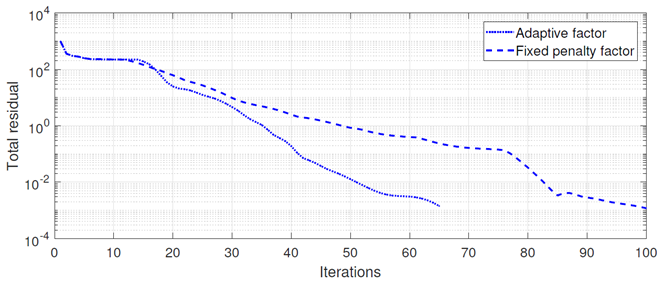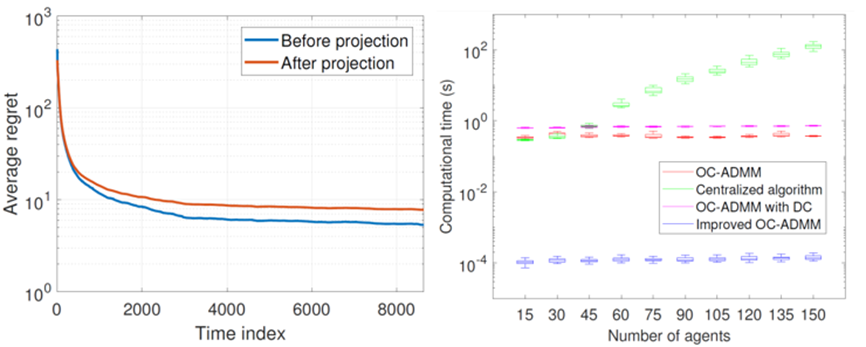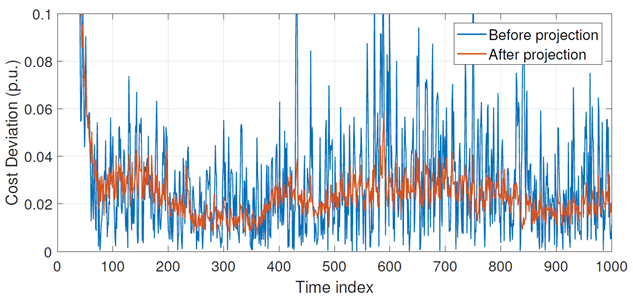A smart grid is an electricity network that can efficiently integrate the behaviour and actions of all users connected to it – both generators and consumers– in order to ensure an economically efficient, sustainable power system with low losses and high levels of quality and security of supply and safety.
Professor Zaiyue Yang’s research group from the Department of Mechanical and Energy Engineering at the Southern University of Science and Technology (SUSTech) has recently achieved several important research results in the area of smart grid. Three papers have been published or accepted in top journals such as IEEE Transactions on Smart Grid and IEEE Transactions on Power Systems.

Considering chance-constrained P2P energy market
Their first paper by Prof. Yang’s team considers the chance-constrained day-ahead peer-to-peer energy and reserve joint market. Their research, entitled “Chance-Constrained Peer-to-Peer Joint Energy and Reserve Market Considering Renewable Generation Uncertainty,” has been published in IEEE Transactions on Smart Grid, a top academic journal in the field of electric power.
As the penetration of renewable energy in the market continues to increase, the power system needs a large amount of reserves to compensate for the random fluctuations in renewable energy generation. Hence, in the future power market, reserves will become an equally important trading commodity like energy.
There is currently no research work in distributed transaction clearing of reserves. In this study, the research team designed a day-ahead peer-to-peer joint energy and reserve market mechanism. All participants can freely complete energy and reserve transactions with neighboring participants, negotiate and determine the transaction price, and the transaction volume.

Figure 1. Convergence of total residual

Figure 2. The number of iterations vs. number of agents (left); Convergence time vs. number of agents (right)
This research first determines the required reserve amount based on the chance-constrained optimization method. It then proposes a market negotiation and trading mechanism based on the alternating direction method of multipliers (ADMM). Simulation results show that the market mechanism proposed in this work has good convergence performance, fairness, and scalability (Figure 2).
This work was jointly completed by SUSTech, Zhejiang University (ZJU), and the Technical University of Denmark (DTU). Zhenwei Guo, a visiting student of SUSTech, is the first author of this paper. Prof. Zaiyue Yang is the corresponding author, and SUSTech is the first affiliation of this paper.
This research was funded by the National Natural Science Foundation of China (NSFC), the International Collaboration Project of Guangdong Province, and the International Collaboration Project of Shenzhen Municipality.
Online optimization-based P2P electricity market mechanism
The second research paper by Prof. Yang’s team considers an online optimization-based synchronous real-time peer-to-peer electricity market mechanism. Their study, entitled “Online Optimization for Real-Time Peer-to-Peer Electricity Market Mechanisms,” has been accepted by the top academic journal IEEE Transactions on Smart Grid.
Considering the uncertainty of future information, the electricity market needs a real-time market mechanism to quickly re-enact transactions between participants to maintain the real-time electricity balance. However, it is very technically challenging to combine the real-time transaction with the P2P mechanism. This is because the P2P mechanism relies on huge calculations and communications. At the same time, the real-time market has short transaction time and requires quick calculation and communication speeds.
In this work, the research group innovatively designed an online ADMM algorithm based on the online optimization framework to realize the real-time P2P electricity transaction (Figure 3). This algorithm has low computational complexity and fast computational speed.
It has also proved to achieve the sub-linear upper bound of regret, which means that global social welfare would be maximized on a long-term scale. Simulation results show that the designed algorithm has good convergence performance, tracking ability, and high calculation efficiency.

Figure 3. Convergence of average regret (left); Computational time vs. number of agents (right)

Figure 4. The normalized cost deviation
This work was jointly completed by SUSTech, ZJU, and DTU. Zhenwei Guo is the first author, and Prof. Zaiyue Yang is the corresponding author of this paper. SUSTech is the first affiliation.
This research was funded by the NSFC and the Shenzhen Science and Technology Innovation Commission.
Asynchronous approach to P2P to power market
Their third research paper looks at an asynchronous real-time peer-to-peer energy and reserve joint market mechanism based on online optimization. This study, entitled “An Asynchronous Online Negotiation Mechanism for Real-Time Peer-to-Peer Electricity Markets,” has been accepted by the top academic journal IEEE Transactions on Power Systems.
In previous studies, an online ADMM algorithm was proposed to realize the market negotiation and trading mechanism. Still, the performance of this synchronous algorithm heavily depends on the reliability of the participants.
The research team made further improvements to this algorithm in this work and proposed an asynchronous online ADMM algorithm for the real-time P2P market transaction and negotiation mechanism (Figure 5). All participants can trade freely without waiting for idle or non-working neighboring participants. They only need to negotiate with the participants who are working in the current time slot.

Figure 5. Convergence comparison of the synchronous market and asynchronous market (left); Profits of agents in synchronous and asynchronous markets (right)
This study also proved the sub-linear upper bound of regret for the designed asynchronous online algorithm, which indicates that social welfare would be maximized in the long run. Simulation results show that the asynchronous mechanism has better convergence performance, robustness, and fairness than the synchronous mechanism.
This work was jointly completed by SUSTech, ZJU, and DTU. Zhenwei Guo is the first author, and Prof. Zaiyue Yang is the corresponding author. SUSTech is the first affiliation.
This research was funded by the National Key Research and Development Program of China, the NSFC, and the Science, Technology and Innovation Commission of Shenzhen Municipality.
Paper links (In order of appearance above):
IEEE Transactions on Smart Grid: https://ieeexplore.ieee.org/document/9178314
IEEE Transactions on Smart Grid: https://ieeexplore.ieee.org/document/9416277
IEEE Transactions on Power Systems: https://ieeexplore.ieee.org/document/9536422
To read all stories about SUSTech science, subscribe to the monthly SUSTech Newsletter.
Proofread ByAdrian Cremin, Yingying XIA
Photo By